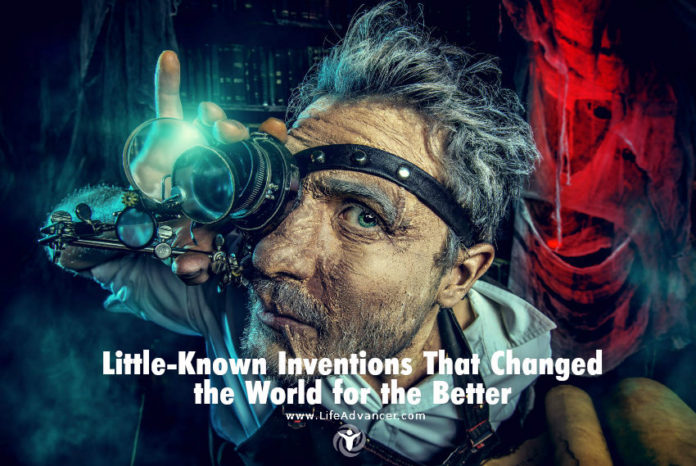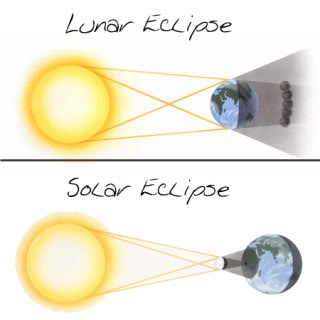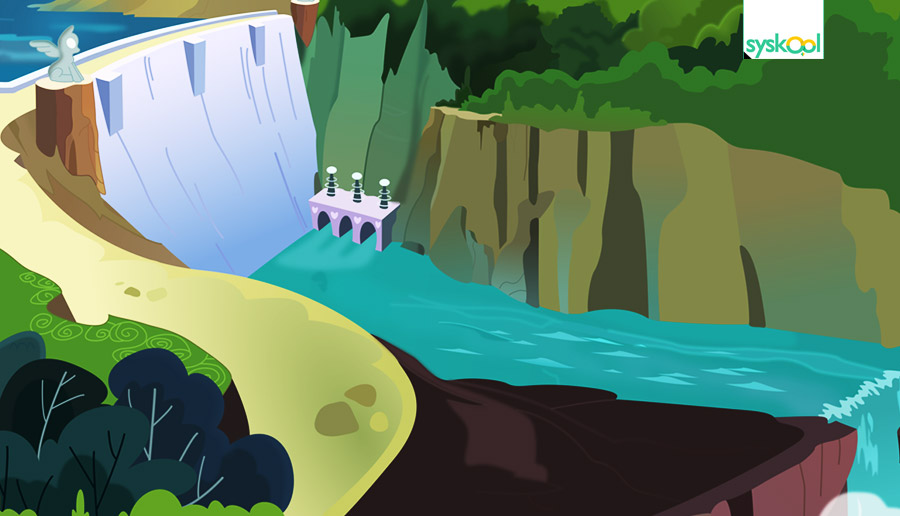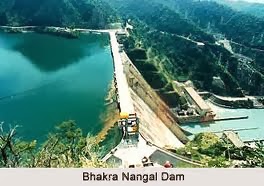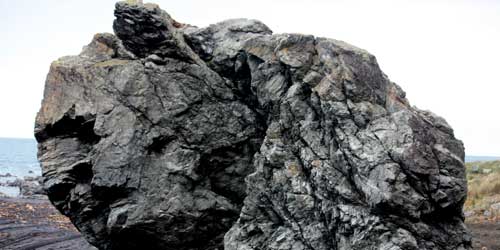“Nothing is permanent except a change.” You might have come across this quotation more than once in your lifetime. Here is the list of inventions that changed the world.
Inventions That Changed the World
Aluminium. (1880) Aluminium is one of the most abundant metals. But, it was only in the 1880s that production processes were invented which enabled aluminium to be produced cheaply. Carl Wilhelm Siemens (US) developed a smelter to produce Aluminium from Bauxite ore in 1886. Aluminium is used extensively in building and aeroplane manufacture.
Must Read: Benjamin Franklin
Aeroplane / aviation (1903) The first powered, heavier than air flight was undertaken by Orville Wright Brothers on December 17, 1903. The first aeroplane was made of wood. By 1909, they made a demonstration of flight around the Hudson River in New York. Aeroplane technology rapidly improved, and they were used for military means in the First World War.
Antiseptics (1850) Dr Semmelwe is a Hungarian physician was the first prominent doctor to make a strong link between the use of antiseptics and improving survival rates from women giving birth. His work was taken up by others, such as Joseph Lister who became a pioneer of antiseptic surgery.
Archimedes Screw (3rd Century BC). Invented by Archimedes of Syracuse, this innovative design enabled water to be pulled uphill against gravity.
Atomic Bomb (1939-1945) Between this period a team of scientists developed the first atomic bomb as part of the Manhattan project. Chief of the project was Robert Oppenheimer. Albert Einstein’s letter in 1939 warning that the Nazi’s were developing a bomb, were important in creating an impetus for the project.
Barbed wire (1867) The first patent for barbed wire was awarded to Lucien B. Smith. Barbed wire became a very cheap way of creating an effective barrier. Initially used in agriculture to keep animals in certain areas. It became widely used for military purposes.
Don’t Miss: Scientists and Inventors
Battery (1800) Voltaic Pile. Alessandro Volta an Italian physicist developed the first battery which gave a steady current using alternative layers of copper and zinc. Lew Urry developed the small alkaline battery in 1949
Bicycle (1839) Kirkpatrick MacMillan, a Scottish blacksmith his said to have developed the first two-wheeled pedal-powered a bicycle. In the 1860s, the Michaux or ‘boneshaker’ improved on this design and started in a boom in bicycle use.
Camera (1839) Another Inventions That Changed the World was of Louis Daguerre a French innovator spent many years developing the process of photography. In 1839, he made the first camera which enables a permanent photograph to be taken. In 1889, George Eastman invented the flexible role of a film which enabled photography to be much more practical.
Computer (1940-45) Charles Babbage was considered the father of computers for his work on mechanical computation devices. But, it was only in the 1940s that the first electronic computers were produced. For example, Howard Aiken & Grace Hopper developed the Harvard Mark I computer in 1944.
Clocks (1656) Christian Huygens developed the pendulum which made primitive clocks more accurate.
Concrete (1824) English inventor, Joseph Aspdin developed hydraulic cement, which used a mix of limestone, clay and aggregate.
Electricity (1832) Michael Faraday (England) and Joseph Henry (US) both built models of electricity generators. Nikola Tesla developed the first AC electricity generator in 1892
Have a look at: Timeline of Scientists of Scientific Revolution
Email (1971) Ray Tomlinson (US) developed the first electronic communication message. The email was sent between two computers on the same network.
Film (1895) Frenchman Louis Lumiere developed one of the first moving film recorders, which they called Cinematography.
Guns The first gun prototypes using gunpowder to launch missiles were developed in the tenth Century by the Chinese. The first rifle ‘Puckle Gun’ was developed in 1718 and the first revolver ‘The Colt’ in 1836.
Internet (1982) Another interesting Inventions That Changed the World was the first internet protocol was established in 1982. In 1995, the internet was de commercialised. In 1990, Tim Berners-Lee developed the World Wide Web the first internet web browser.
Matches (1826) John Walker (English) developed the first friction match which could be lit by striking sandpaper. The first safety match originated in 1844 by the Swede Gustaf Erik Pasch.
Motor car (1886) Carl Benz (Germany) is credited with the first patent for the modern motor car with a petrol combustion engine. Many similar designs were developed around the same time.
Pasteurisation . Invented by Italian Lazzaro Spallanzani, in 1768 – a process of killing bacteria in food. Louis Pasteur (1864) developed a more modern form of pasteurisation which helped make milk and wine safer to drink.
Penicillin (1928) Discovered by Alexander Fleming (Scot). who found the growth of penicillin on a jar of mould left overnight. Penicillin was later mass produced by Howard Florey (Aus) and a team of scientists enabling it to be used during the Second World War .
Petrol (1859) Edwin Drake (US) Modern drilling and refinement of oil into petrol began around the middle of Nineteenth Century. It enabled petrol to be used as a fuel in the internal combustion engine.
Also Read: Peoples Who Changed the World
Plastic (1862) Alexander Parkes (England) Parkes demonstrated a plastic which was made from heated cellulose and moulded into a shape. Other important developments include 1908 – Cellophane – Jacques E. Brandenberger
Printing Press (1450) Next Inventions That Changed the World was the first printing press was designed by Johannes Gutenberg in Germany. The printing press played a key role in the reformation of Martin Luther – as pamphlets and books were mass produced for the first time – showing the power of the printing presses.
Radio (1895) G.Marconi (Italy) sent and received the first radio waves in 1895. Nikola Tesla took out the first patent for radio using his Tesla’s coil.
Railways (1830) The first railways originated in England and they played a key role in the industrial revolution – helping with the transfer of goods and people. For the first time, people could travel across the country in less than a day. George Stephenson built the first inter-city railway between Liverpool and Manchester in 1830
Refrigerators (1748) -William Cullen (Scotland) Cullen displayed the first successful refrigeration at the University of Glasgow. Fridges use rapid cooling of gases as the main source of their artificial cooling effect. In 1805 Oliver Evans (US) invented the first refrigerator machine.
Stamps (1837) Rowland Hill proposed the first stamp as a way to offer cheap postal delivery. His proposals led to a universal postage system and the introduction of the first stamp – The Penny Black.
Read Also: Inventions and Discoveries
Steam Engines (1968) Thomas Savery developed first crude pressure cook style steam engine. Thomas Newcomen (1712) significantly developed this with an atmospheric steam engine (pumping steam into a cylinder) James Watt (1765) improved this with a condenser that could cool while the cylinder was hot. Watt’s steam engine became dominant design of industrial revolution
Telephone (1880s) Graham Alexander Bell (Scotland) Antonio Meucci (US) Both inventors have a claim for inventing the telephone – ability to speak to someone at a significant distance.
Television (1925) Many people contributed to the development of the TV. But, John Logie Baird is credited with displaying one of the first moving images on a TV screen. Logie made use of a Nipkow disc and a Cathode Ray tube.
Thermometer (17th Century) Galileo Galilei (Italy) claimed the Inventions That Changed the World of a thermoscope which showed changes in temperature as liquid expanded and contracted. Many other scientists contributed to the development of the thermometer (G.Bianci, Robert Fludd)
Tyres (1890) The pneumatic tyre was developed by John Boyd Dunlop in the 1880s. This helped to revolutionise transport – especially for the bicycle and motor car. The pneumatic tyre had an inner tube of air to help give a more comfortable ride than the solid tyres.
Water Wheel (4000BC) The water wheel was one of the first human Inventions That Changed the World to capture the mechanical energy and was used to help grind corn. In modern times, the water wheel was improved to drive an hydraulic turbine.
Wheel (4th millennium BC) The wheel is perhaps the oldest Inventions That Changed the World, and no-one is exactly certain when it was invented, but emerged in different regions independently. It enabled quicker transportation by chariots and pack drawn animal carriages.
X-Rays (1903) The use of X-Rays were pioneered by William Coolidge who invented the Coolidge tube. Marie Curie’s work on radiology enabled a big advance in X-ray technology and it was used in the First World War.
Must Read:
Amazing Facts About James Watt
Who is Who – Important Persons in History of World


